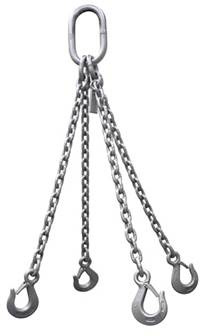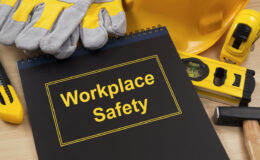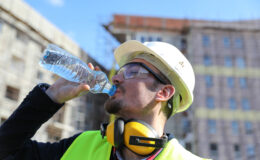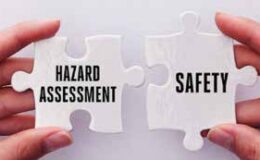All too often we read of crane and rigging accidents that cause death and extensive damage. Crane operators following basic safe hoisting can prevent most crane and rigging accidents. The most important step in any rigging operation is determining the weight of the load to be hoisted. This information can be obtained from shipping papers, design plans, catalogue data, manufacturer’s specifications, and other dependable sources. When such information is not available, it is necessary to calculate the load weight. There are a number of steel weight calculator available online that will help you determine the weight of your load.
Operators must also know the rated capacity of the crane. This is the maximum amount of weight a crane can safely lift. The rated capacity should be marked directly on the beam of the crane. Even though the equipment is suitable for the weight of the load, operators need to consider the following:
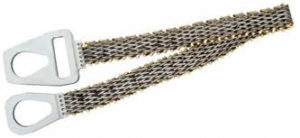 Will the angle of the rigging devise take away any of the cranes capacity?
Will the angle of the rigging devise take away any of the cranes capacity?- Operator rigged the load to the center of gravity of the crane and lift line?
- Are there any sharp surfaces or corners in the rigging that could cause a rigging devise such as a sling to tear? Should padding be used to protect the sling?
- Will the load be under control along the entire path of the lift?
- Should a tag line be used to guide the load?
- Are there any obstructions along the lift path that must be cleared? Can they be moved out of the way?
- Will the suspended load be clear of all personnel?
There are a number of different rigging devices that are used in conjunction with an overhead crane. It is imperative that you choose the correctly rated rigging device before attempting any lift. At most workplaces, slings are commonly used in rigging. A synthetic web slings that has been well selected and is properly functioning will keep the load stable and secure during the course of the lift. However, using the wrong sling may lead to a load that sways, slips out of the sling, or causes the sling to snap or otherwise fail under stress. Each sling should have a tag that states the rated capacity, the date it was put into service, and its length.
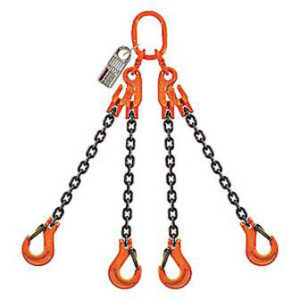 If you are lifting heavy loads, chain slings are commonly used because of their strength. Chain slings are able to adapt to the shape of the load and not as subjected to sharp edges like fiber slings. Chain slings are often the best choice for lifting materials that are very hot, because these slings can be heated to temperatures of up to 1000°F; however, when alloy chain slings are consistently exposed to service temperatures in excess of 600° F, the working load limits must be lowered in accordance with the manufacturer’s recommendations. Care should be taken when using alloy chain slings because they are subject to damage by sudden shocks or jolts. In addition, when inspecting alloy steel chain slings, pay special attention to any stretching, cracks, elongated links, and nicks and gouges. These are all indications that the sling may be unsafe and should be removed from service.
If you are lifting heavy loads, chain slings are commonly used because of their strength. Chain slings are able to adapt to the shape of the load and not as subjected to sharp edges like fiber slings. Chain slings are often the best choice for lifting materials that are very hot, because these slings can be heated to temperatures of up to 1000°F; however, when alloy chain slings are consistently exposed to service temperatures in excess of 600° F, the working load limits must be lowered in accordance with the manufacturer’s recommendations. Care should be taken when using alloy chain slings because they are subject to damage by sudden shocks or jolts. In addition, when inspecting alloy steel chain slings, pay special attention to any stretching, cracks, elongated links, and nicks and gouges. These are all indications that the sling may be unsafe and should be removed from service.
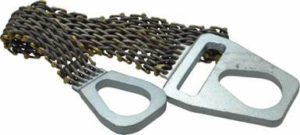 Another not so common type of rigging device is wire rope slings. Wire rope slings are composed of individual wires that have been twisted to form strands. The strands are then wound to form a wire rope. When wire rope has a fiber core, it is usually more flexible but is less resistant to environmental damage. A core that is made of a wire rope strand tends to have greater strength and is more resistant to heat damage. When selecting a wire rope sling to give the best service, there are several characteristics to consider. Strength, flexibility or the ability to bend without distortion, and durability or the ability to withstand wear and abuse. Wire rope slings are subject to damage resulting from contact with sharp edges of the loads being lifted. These edges can be blocked or padded to minimize damage to the sling.
Another not so common type of rigging device is wire rope slings. Wire rope slings are composed of individual wires that have been twisted to form strands. The strands are then wound to form a wire rope. When wire rope has a fiber core, it is usually more flexible but is less resistant to environmental damage. A core that is made of a wire rope strand tends to have greater strength and is more resistant to heat damage. When selecting a wire rope sling to give the best service, there are several characteristics to consider. Strength, flexibility or the ability to bend without distortion, and durability or the ability to withstand wear and abuse. Wire rope slings are subject to damage resulting from contact with sharp edges of the loads being lifted. These edges can be blocked or padded to minimize damage to the sling.
Another type of sling is a wire or metal mesh sling. These slings are much like chain mail in composition.
They conform to the shape and contours of a load and are strong and durable. Wire or metal mesh slings are often used in basket or choker hitches, as well as vertical hitches. When inspecting these slings, be sure to look for any broken welds, cracking or broken brazed joints along the side of the sling, or distortion of the handles. These are signs of a weakened sling and should be taken out of service.
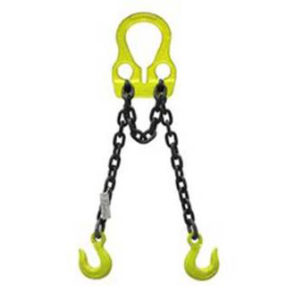 In summary, there are good practices to follow to protect yourself while using an overhead crane to move materials. Learn as much as you can about the materials you will be working with to ensure you are using the proper rigging equipment. Analyze the load to be moved – in terms of size, weight, shape, temperature, and sensitivity – then choose the proper rigging equipment that best meets those needs. Always inspect all the equipment before and after a move. Use safe lifting practices and technique to ensure the safety of all their employees involved in hoisting and rigging.
In summary, there are good practices to follow to protect yourself while using an overhead crane to move materials. Learn as much as you can about the materials you will be working with to ensure you are using the proper rigging equipment. Analyze the load to be moved – in terms of size, weight, shape, temperature, and sensitivity – then choose the proper rigging equipment that best meets those needs. Always inspect all the equipment before and after a move. Use safe lifting practices and technique to ensure the safety of all their employees involved in hoisting and rigging.
If you have any questions regarding proper overhead crane and rigging techniques, please contact your loss control consultant.
Enjoy the milder temperatures and have a safe and productive autumn.

